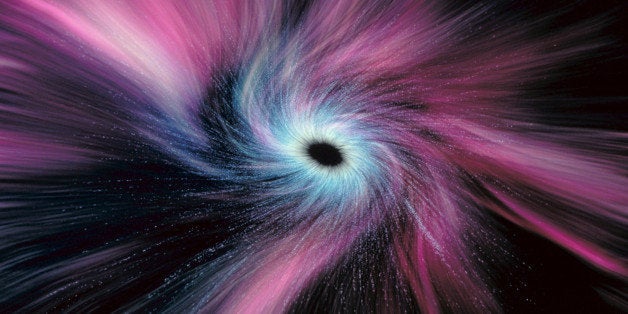
Astronomers know that most supermassive black holes start out small and grow over time. But how does this growth occur? Researchers who have measured the spin of a supermassive black hole in a quasar—the shining core of a distant galaxy—6.1 billion light-years away say that such black holes have likely grown through mergers between their host galaxies and other galaxies.
Researchers were able to study the quasar (seen above) in detail, thanks to the magnifying effect of a gravitational lens—a massive galaxy cluster in front of it—that caused it to appear brighter than it would have otherwise. From analyzing x-rays from the quasar, the researchers were able to figure out that the black hole was spinning very rapidly. If the black hole had grown by feeding on gas streaming into it from different directions, it would have been spinning a lot more slowly than observed, the researchers report online in Nature.
Rather, the gas that the black hole ingested over time to become supermassive fell toward it in the direction of its spin, accreting material in a coherent manner. And so, like a merry-go-round that goes around faster and faster with every additional push given to it along its rotational direction, the black hole spun faster and faster with time. The likely scenario in which this could have happened is if the galaxy hosting the black hole experienced mergers or collisions with other galaxies through its evolutionary history. Each time a merger occurred, material from the new galaxy got incorporated into the accretion disk around the black hole, spinning in the same direction as the black hole and eventually contributing to its growth.
Original article:
This story has been provided by AAAS, the non-profit science society, and its international journal, Science.
